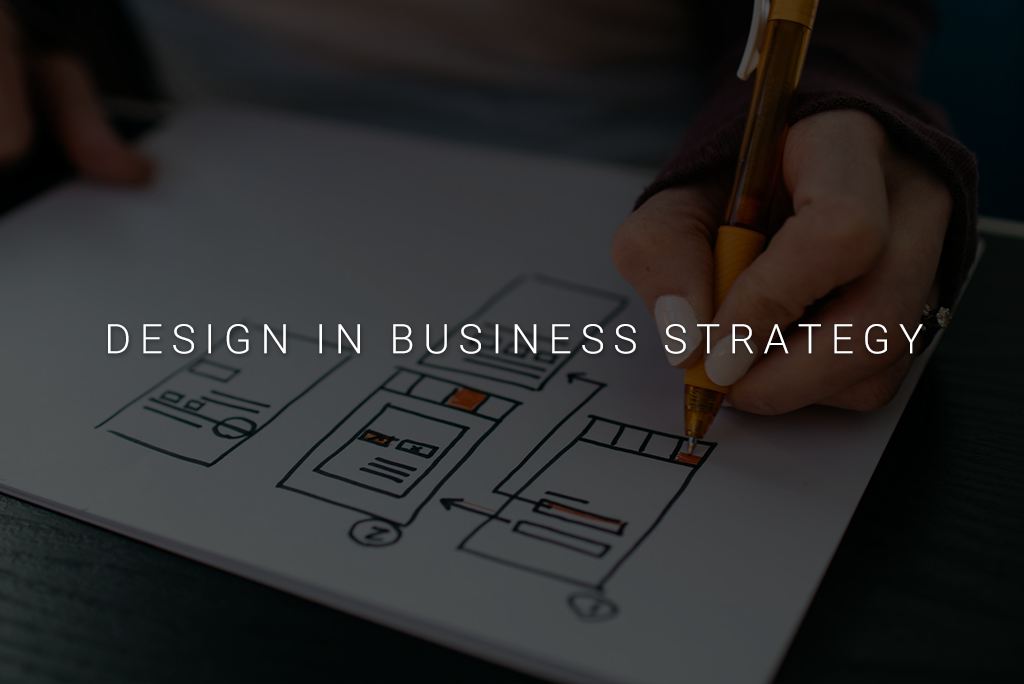No products in the cart.
Business
The Role of Design in Business Strategy
Design plays an important role in business strategy. It is a key factor in creating a successful business, as it helps to create a unique identity and differentiate a company from its competitors. Design can also help to create a strong brand image, which can be used to attract customers and build loyalty. Additionally, design can be used to create a competitive advantage, as it can help to create products and services that are more attractive to customers. Finally, design can be used to create a positive customer experience, which can lead to increased customer satisfaction and loyalty. In short, design is an essential part of any successful business strategy.
How Design Thinking Can Help Businesses Achieve Strategic Goals
Design thinking is a creative problem-solving process that has been used by businesses to achieve strategic goals. It is a process that involves understanding the needs of customers, developing innovative solutions, and testing those solutions to ensure they meet the needs of customers. Design thinking is a powerful tool for businesses to use to achieve their strategic goals.
Design thinking begins with understanding the customer’s needs. This involves researching the customer’s needs, gathering feedback from customers, and analyzing the data to identify areas of improvement. This helps businesses understand what their customers want and need, and how they can best meet those needs.
Once the customer’s needs are understood, businesses can begin to develop innovative solutions. This involves brainstorming ideas, prototyping solutions, and testing them to ensure they meet the customer’s needs. This helps businesses create solutions that are tailored to the customer’s needs and that are more likely to be successful.
Finally, businesses can use design thinking to test their solutions. This involves testing the solutions with customers to ensure they meet the customer’s needs and are successful. This helps businesses ensure that their solutions are effective and that they are meeting their strategic goals.
Design thinking is a powerful tool for businesses to use to achieve their strategic goals. It helps businesses understand the customer’s needs, develop innovative solutions, and test those solutions to ensure they meet the customer’s needs. By using design thinking, businesses can create solutions that are tailored to the customer’s needs and that are more likely to be successful.
The Benefits of Investing in Design for Businesses
Design is an important factor in the success of any business. Investing in design can help businesses to stand out from the competition, increase customer engagement, and improve the overall customer experience. Here are some of the key benefits of investing in design for businesses.
1. Increased Brand Recognition: Investing in design can help businesses to create a unique and recognizable brand identity. This can help to differentiate a business from its competitors and make it easier for customers to recognize and remember the brand.
2. Improved Customer Engagement: Design can be used to create an engaging and visually appealing customer experience. This can help to draw customers in and encourage them to interact with the brand.
3. Increased Sales: Investing in design can help businesses to create more attractive and effective marketing materials. This can help to increase sales by making it easier for customers to find and purchase products or services.
4. Improved Efficiency: Design can be used to create more efficient processes and systems. This can help to reduce costs and improve the overall efficiency of the business.
5. Increased Customer Loyalty: Investing in design can help businesses to create a more positive customer experience. This can help to build customer loyalty and encourage customers to return to the business in the future.
Overall, investing in design can be a great way for businesses to increase their brand recognition, improve customer engagement, and increase sales. It can also help to improve efficiency and build customer loyalty. For these reasons, investing in design is an important part of any successful business strategy.
How to Incorporate Design into Your Business Strategy
Design is an essential component of any successful business strategy. It can be used to create a unique brand identity, differentiate products and services, and improve customer experience. By incorporating design into your business strategy, you can create a competitive advantage and increase customer loyalty.
The first step in incorporating design into your business strategy is to define your brand identity. This includes creating a logo, color palette, and typography that represent your company’s values and mission. This will help customers recognize your brand and create a sense of trust and loyalty.
The next step is to use design to differentiate your products and services. This can be done by creating unique packaging, logos, and other visuals that make your products stand out from the competition. Additionally, you can use design to create a unique customer experience. This can include creating a website that is easy to navigate, designing a mobile app that is user-friendly, and creating visuals that are engaging and informative.
Finally, you should use design to create a consistent customer experience across all channels. This includes using the same logo, color palette, and typography on all of your marketing materials, website, and social media accounts. Additionally, you should ensure that your customer service is consistent across all channels.
By incorporating design into your business strategy, you can create a unique brand identity, differentiate your products and services, and improve customer experience. This will help you create a competitive advantage and increase customer loyalty.
The Impact of Design on Business Performance
Design is an integral part of any business, and its impact on business performance can be significant. Design can influence customer perception, brand recognition, and overall profitability. It is important for businesses to understand the impact of design on their performance and to use design strategically to maximize their success.
Good design can help businesses to stand out from the competition and create a strong brand identity. It can also help to create a positive customer experience, which can lead to increased customer loyalty and repeat business. Design can also be used to create a sense of trust and credibility, which can help to attract new customers.
Design can also be used to improve the efficiency of a business. By streamlining processes and creating a more user-friendly experience, businesses can save time and money. This can lead to increased productivity and profitability.
Design can also be used to create a competitive advantage. By creating a unique product or service, businesses can differentiate themselves from their competitors and gain a competitive edge.
Finally, design can be used to create a positive public image. By creating a visually appealing website or product, businesses can create a positive impression and attract more customers.
In conclusion, design can have a significant impact on business performance. By understanding the impact of design and using it strategically, businesses can maximize their success and create a competitive advantage.
How to Leverage Design to Create a Competitive Advantage
Design is an essential element of any business, and it can be used to create a competitive advantage. By leveraging design, businesses can differentiate themselves from their competitors, create a unique brand identity, and increase customer engagement.
First, businesses should use design to create a unique brand identity. This can be done by developing a distinct visual style, such as a logo, color palette, and typography. This will help customers recognize the brand and create an emotional connection with it. Additionally, businesses should use design to create a consistent user experience across all platforms, from websites to mobile apps. This will ensure that customers have a positive experience with the brand, no matter how they interact with it.
Second, businesses should use design to create engaging content. This can be done by creating visuals that are eye-catching and informative. For example, businesses can use infographics to explain complex topics in an easy-to-understand way. Additionally, businesses should use design to create interactive experiences, such as virtual reality or augmented reality. This will help customers engage with the brand in a more meaningful way.
Finally, businesses should use design to create a competitive advantage. This can be done by creating products or services that are unique and offer something that competitors don’t. Additionally, businesses should use design to create a customer-centric experience. This can be done by creating a personalized experience for customers, such as personalized product recommendations or tailored content.
By leveraging design, businesses can create a competitive advantage and stand out from their competitors. Design can be used to create a unique brand identity, engaging content, and a customer-centric experience. By doing so, businesses can increase customer engagement and create a lasting impression.
Q&A
Q1: What is the role of design in business strategy?
A1: Design plays an important role in business strategy by helping to create a competitive advantage, differentiate products and services, and create a unique customer experience. Design can also help to create a strong brand identity, improve customer engagement, and increase customer loyalty.
Q2: How does design help to create a competitive advantage?
A2: Design can help to create a competitive advantage by making products and services more attractive and easier to use. Design can also help to differentiate products and services from competitors, making them stand out in the marketplace.
Q3: How does design help to create a unique customer experience?
A3: Design can help to create a unique customer experience by making products and services more intuitive and user-friendly. Design can also help to create a strong brand identity, which can help to build customer loyalty and trust.
Q4: How does design help to improve customer engagement?
A4: Design can help to improve customer engagement by making products and services more attractive and easier to use. Design can also help to create a strong brand identity, which can help to build customer loyalty and trust.
Q5: How does design help to increase customer loyalty?
A5: Design can help to increase customer loyalty by creating a strong brand identity and making products and services more attractive and easier to use. Design can also help to create a unique customer experience, which can help to build customer loyalty and trust.
Conclusion
The role of design in business strategy is essential for any business to succeed. Design can help businesses create a competitive advantage, differentiate their products and services, and create a unique customer experience. Design can also help businesses create a strong brand identity, increase customer loyalty, and create a positive customer experience. Design can also help businesses create a more efficient and effective workflow, reduce costs, and increase profits. Ultimately, design is an important part of any business strategy and should be taken into consideration when developing a business strategy.





